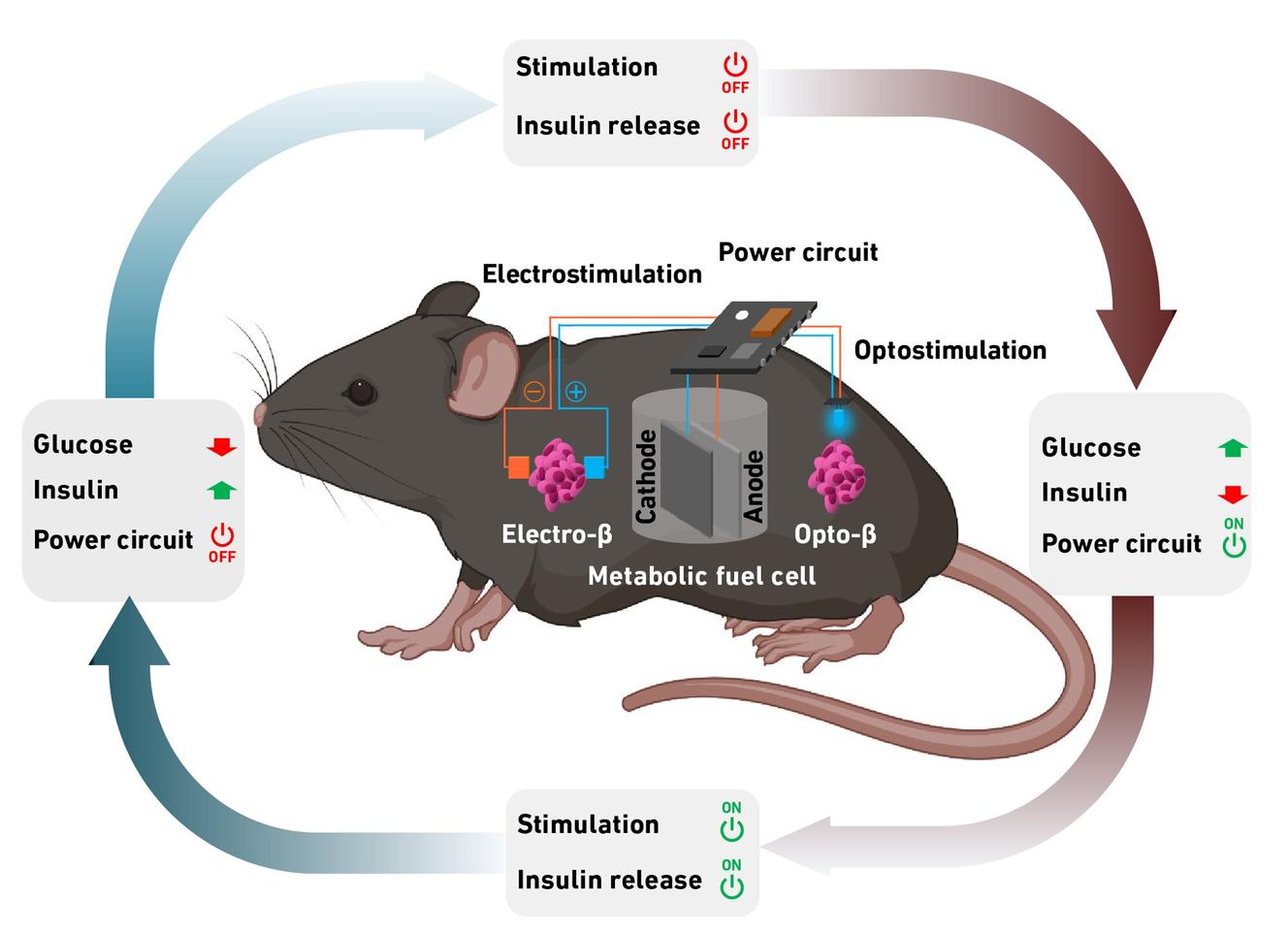Glucose fuel cells that can effectively harness the body’s chemical energy and turn it into an electrical charge has been a long-term holy grail for scientists since such potential was first studied back in 1968.
But these biotech batteries have been challenged by an array of biocompatibility issues for almost as long.
Now, a team of researchers out of ETH Zurich have developed a novel fuel cell implant for the management of type 1 diabetes. What’s more, it connects to artificial beta cells designed by the same team in 2016 that can successfully produce and release insulin when triggered.
“The new system autonomously regulates insulin and glucose levels and could be used to treat diabetes in the future,” Martin Fussenegger from the Department of Biosystems Science and Engineering at ETH Zurich.
In type 1 diabetes, the body can’t produce enough insulin, so an external supply must intervene. Current insulin pumps and monitors also rely on external power supplies such as single-use batteries.
The fuel cell itself, which resembles a teabag that’s slightly larger than a fingernail, is covered in a nonwoven fabric and coated with alginate, an algae-derived product used widely in biomedicine because of its high degree of biocompatibility. When implanted under the skin, the cell’s alginate soaks up body fluid, allowing glucose to permeate the surface and flow into the power center.
Inside the cell, the team developed a copper-based nanoparticle anode that splits glucose into gluconic acid and a proton to generate an electric current.
“Many people, especially in the Western industrialized nations, consume more carbohydrates than they need in everyday life,” Fussenegger said. “This gave us the idea of using this excess metabolic energy to produce electricity to power biomedical devices.
The fuel cell was then coupled with an insulin capsule featuring the team’s beta cells, which could be triggered to secrete insulin via electric current from the implant.

Maity D, et al, Adv. Mater. 2023/ETH Zurich
Overall, the two components provide a self-regulating circuit. When the fuel cell powered by glucose senses excess blood sugar, it powers up. This then stimulates the beta cells to produce and secrete insulin. As blood sugar levels dip, it trips a threshold sensor in the fuel cell, so it powers down, in turn stopping the insulin production and release.
This self-sustained circuit could also produce enough power to communicate with a device such as a smartphone, which allows for monitoring and adjusting, and even has potential for remote access for medical intervention.
While the biotech was successfully tested in mice models, the researchers hope to find the resources to develop it from prototype to market stage.
The study was published in the journal Advanced Materials.
Source: Eidgenössische Technische Hochschule Zürich
Source of Article